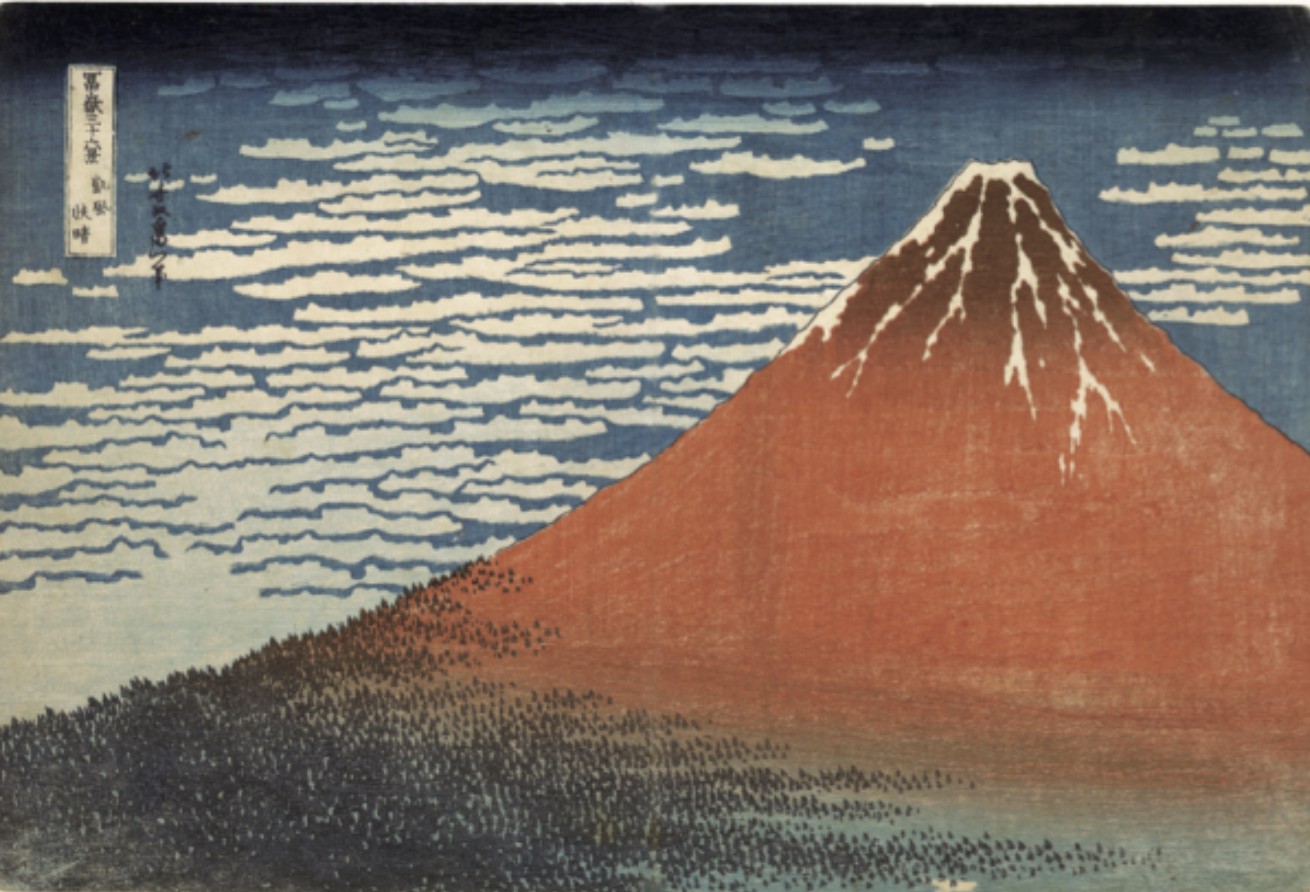Ukiyoe artist Katsushika Hokusai left behind a large number of works throughout his life, some 30,000, but there is little documentation on his life and he is an enigmatic figure.
This article describes the unknown life of Katsushika Hokusai, dividing it into six different periods Gagou(雅号).
Who was Katsushika Hokusai?
Katsushika Hokusai is not only one of Japan’s most famous ukiyoe artists, but is also the most famous Japanese artist in the world. As an ukiyoe artist, he is best known for his masterpieces of prints, such as ‘Fugaku Sanjurokkei (冨嶽三十六景)’, a series of landscapes featuring Mount Fuji, and ‘Hokusai Manga (北斎漫画)’, a collection of models drawn for his pupils. He lived and painted until the age of 90, an unusually long life at the time.
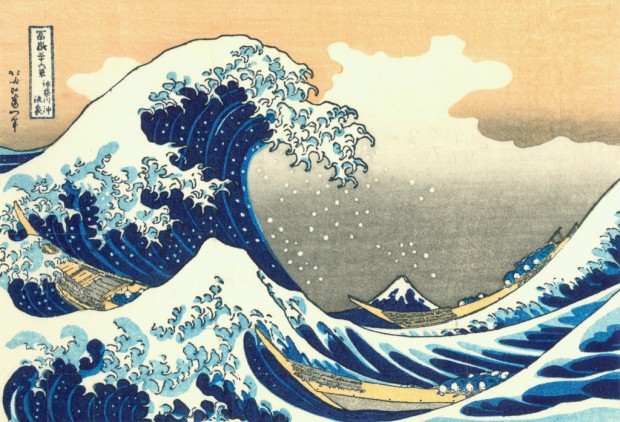 This is Katsushika Hokusai’s most famous work. Kanagawa Okinamiura(神奈川沖浪裏) from ‘Fugaku Sanjurokkei (冨嶽三十六景)’
This is Katsushika Hokusai’s most famous work. Kanagawa Okinamiura(神奈川沖浪裏) from ‘Fugaku Sanjurokkei (冨嶽三十六景)’
After Hokusai’s death, his name spread throughout Europe. His innovative work astonished Impressionist painters such as Van Gogh, Monet and Degas, and his influence on the “Japonisme” that swept Europe and the US in the 19th century was enormous.
For this reason, Hokusai was the only Japanese artist selected by the American LIFE magazine for its special feature on the ‘100 greatest artists of the last thousand years’. He is in fact more highly regarded in the rest of the world than in Japan.
What is Hokusai’s real name?
‘Kawamura Tetsuzo(川村鉄蔵)’ – who on earth could we be talking about? This is in fact, Hokusai’s real name. Born on 23 September 1760, Hokusai’s childhood name was Tokitaro(時太郎), which later became Tetsuzo(鉄蔵). Although Hokusai also had many other pseudonyms, his real name had been a more common name than one might think.
Summary of Katsushika Hokusai’s life and representative works
As a painter’s pseudonym is an expression of responsibility as an author, like a pen name or stage name, it is not supposed to be changed frequently. It is surprising that Katsushika Hokusai changed his pseudonym 30 times during his lifetime. The following is a look at Hokusai’s life during his 90 years of life, which was a life span rarely seen at the time, divided into five different periods (pseudonyms).
Hokusai, aged 20, appears on the Edo art scene with his ukiyoe portrayals of actors
Hokusai was born in September 1760 in the Honjo-Warigeshui(江戸本所割下水) area of Edo. At the age of four he was adopted by Nakajima Ise(中島伊勢), the shogunate’s official mirror-maker, and spent his time sketching, and because of his dexterity became an apprentice woodcarver at the age of 14. At the age of 19, he was apprenticed to Katsukawa Shunsho(勝川春章), a well-known actor-painter at the time. He soon took the name Katsukawa Shunro(勝川春朗), and at the age of 20 he made his first appearance in the world of ukiyoe with hosoban yakushae(細判役者絵). However, his inquisitive nature meant that he was not content to imitate his teacher, and he studied the Kano school and Western-style painting in secret, eventually being excommunicated. This, in turn, led to a tumultuous life as a painter.
Works from the Shunro period, ‘Masamune Musume Oren, Segawa Kikunojo’.
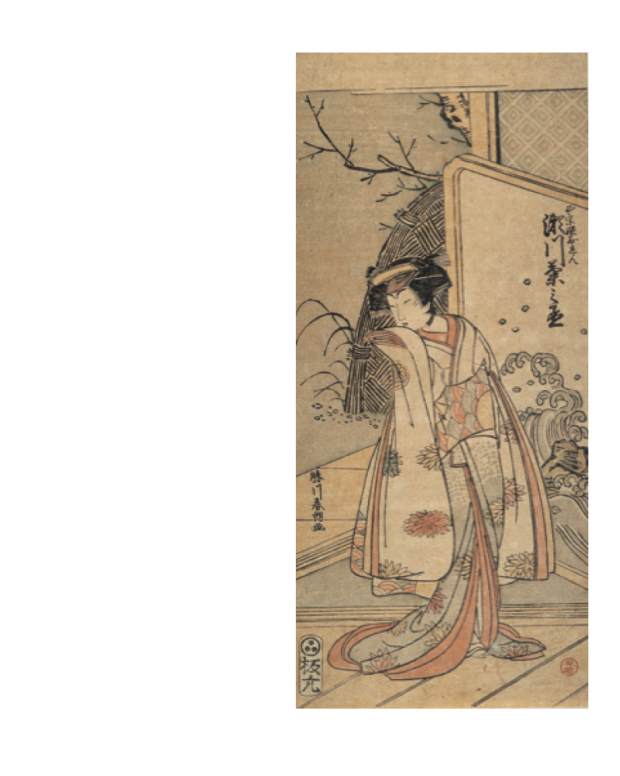
‘Masamune(正宗娘) Oren, Segawa Kikunojo(瀬川菊之丞)’, Hokusai’s debut work. With the signature of Katsukawa Shunro(勝川春朗).
北Hokusai, aged 30, gained a reputation for his unique style, which was distinct from the ukiyoe school of painting
Katsushika Hokusai, who had been expelled from the Katsukawa school, began to use the Sori (宗理) signature from around the age of 36. It is thought that he had taken the name of Tawaraya Sori(俵屋宗理), a town painter of the Rimpa school, the previous year. At the time, he lost his place of work and found it difficult to make ends meet. However, his passion for painting only increased. It was around this time that he was influenced by Dutch landscape prints. Naturally, he drifted away from the ukiyoe prints and kibyoshi(黄表紙) illustrated book paintings that he had been working on during his Shunro period. This is when he came across the world of Kyoka(狂歌), which was becoming a nationwide trend at the time. As a result, he produced many magnificent kyoka picture books and excellent surimono(摺物) under the name Sori. He also produced a large number of paintings and drawings, which brought his own individuality to the fore.
‘Sumidagawa, Watari no Yuki’, a work from the Sori period
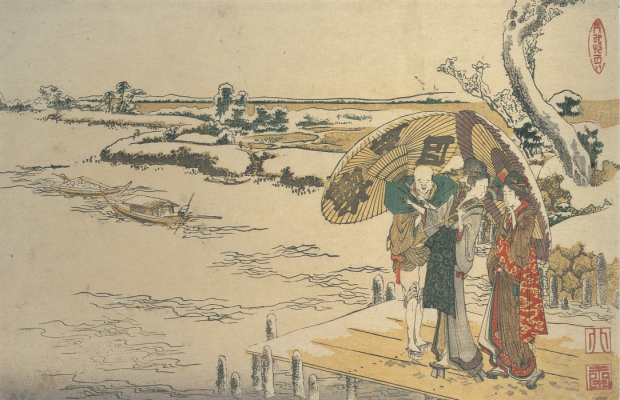
It depicts a slender beauty in the style of Sori(宗理).
Hokusai, aged 40, also showed his exceptional talent for hand-drawn drawing
A major turning point for Katsushika Hokusai came in 1805, when he gave the name Sori to his pupil and took the name Katsushika Hokusai. From then on, he did not belong to any school of painting, but paved the way for himself as an independent painter. After being exposed to Western-style painting during the Sori period (Kyouwa era), Hokusai shifted the focus of his work to illustrating full-length novels and yomihon(読本), which were newly coming into the limelight during the Bunka era. This led to the prosperity of yomihon, and it is said that yomihon became so popular precisely because of Hokusai’s illustrations. Hokusai also began to use a wide variety of expression in his ukiyoe prints, producing famous places and caricatures. He also produced many ukiyoe prints in his later years, and left behind many masterpieces, such as his paintings of beautiful women.
‘Suiyo bijin zu’, Katsushika Hokusai period
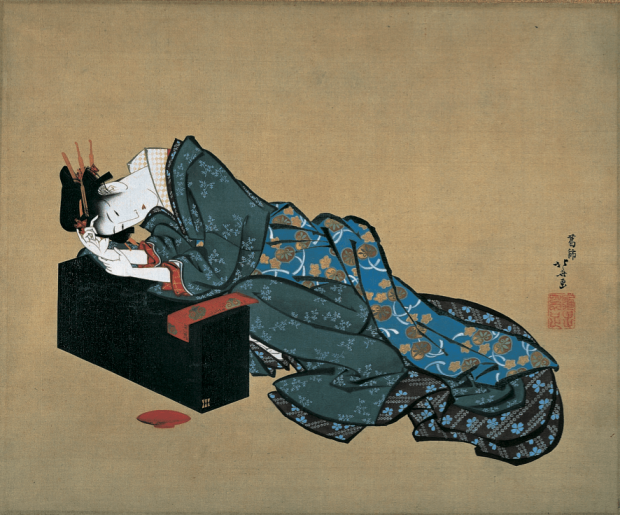
‘Suiyo bijin zu(酔余美人図)’
Katsushika Hokusai, aged 50, publishes his masterpiece, ‘Hokusai Manga’
After the age of 50, Katsushika Hokusai also took on a new pseudonym, Taito(戴斗). He also shifted his interest and production from illustrations for reading books to illustrated manuscripts. An ‘edehon’ is a book of prints that serves as a model for students and admirers of Katsushika Hokusai to follow when learning how to draw. Katsushika Hokusai’s picture handbooks gradually broadened their scope and became collections of designs and patterns for craftspeople. This proves how many students and admirers of Hokusai there were. During his travels in the Kansai region, Katsushika Hokusai drew more than 300 illustrated manuscripts. These were compiled into the first edition of the Hokusai Manga(北斎漫画), which has become famous in later generations. His drawing skills were so well received that 15 editions have since been published.
‘Hokusai Manga’, a masterpiece of the Taito period
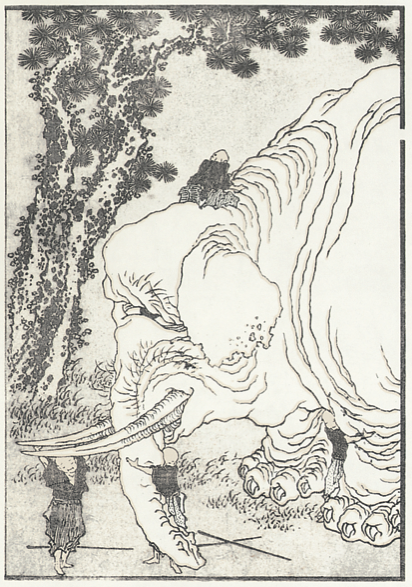
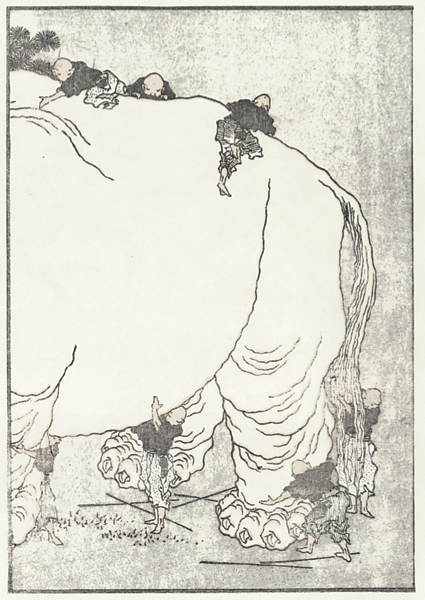
Hokusai Manga(北斎漫画), Part VIII: Gunmouzou wo Hyosu (群盲撫象)
▼Book ‘Katsushika Hokusai <Hatsuzuri(初摺)> Hokusai Manga(北斎漫画)’
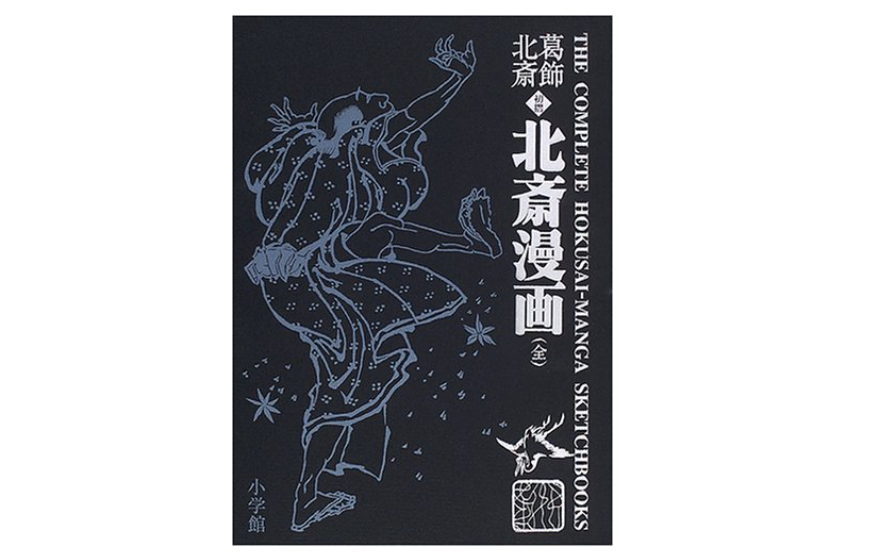
Hokusai, aged 60, produced a series of ukiyoe woodblock prints, including ‘Fugaku Sanjurokkei (富嶽三十六景)’
After the age of 60, the age of retirement in modern times, Katsushika Hokusai again began to use a new pseudonym, this time Iichu(為一), which he signed on a New Year’s print in 1820. In the first half of this period, he continued to concentrate on the production of illustrated handscrolls, but gradually began to produce a number of excellent works on paper-format prints. He then turned his attention to nishikie (錦絵) and produced a number of immortal masterpieces. These works include ‘Fugaku Sanjurokkei (富嶽三十六景)’, which many people immediately associate with Hokusai today. There is no end to the number of outstanding works from this period, including landscape and flower and bird prints such as ‘Shokoku Taki Meguri(諸国瀧廻り)’ and ‘Shokoku Meikyo Kiran(諸国名橋奇覧)’, as well as colourful nishikie prints with motifs from classics and ghost stories.
Mt Fuji and waves in the well-known ‘Fugaku Sanjurokkei’, a masterpiece of the Iichu period

‘Fugaku Sanjurokkei (冨嶽三十六景) Gaifu Kaisei(凱風快晴)’
Hokusai, aged 75, changes his painting title to Gakkyojin and devotes hand-drawn drawing
Despite achieving fame for his ukiyoe prints, Katsushika Hokusai gradually lost his enthusiasm for prints. However, in his landscape picture book Fugaku hyakkei (富嶽百景), which he published at the age of 75, Katsushika Hokusai wrote about his deep passion for painting and changed his artistic title to Gakkyorojin manji (画狂老人卍). His enthusiasm for painting continued to grow even in old age, and it is admirable to see he took on new challenges in his later years. Hokusai’s final works were hand-drawn drawings. He sought motifs not from the customs of the time, but from historical and narrative paintings based on Japanese and Chinese folklore and religion, as well as animals and plants. He also took up the challenge of creating original Western-style paintings, and it would be no exaggeration to say that his vigorous creative ambition was beyond that of ordinary people.
▼ Book ‘北斎原寸美術館 100%Hokusai! (100% ART MUSEUM)’
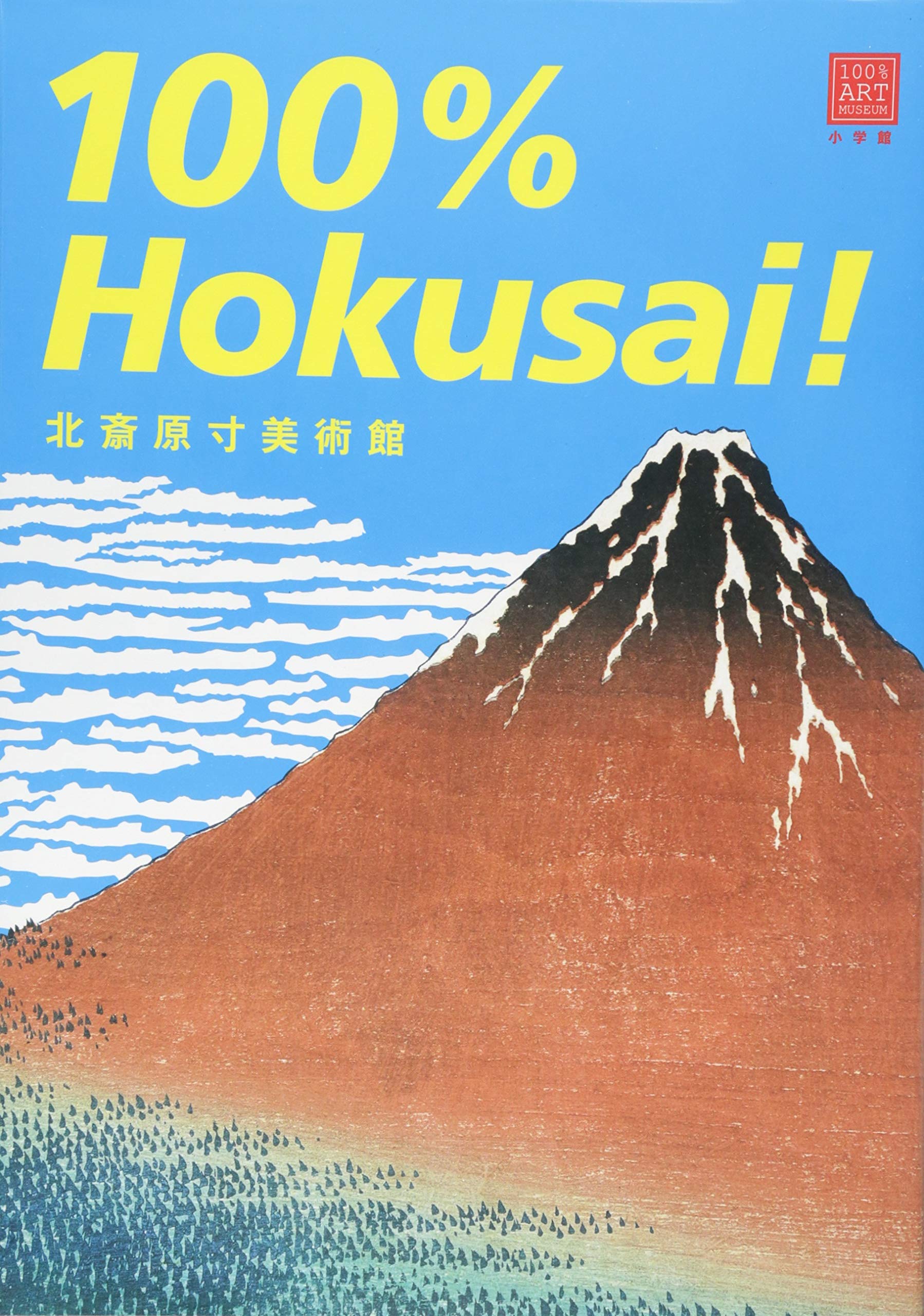
‘Nikuhitsu Gajyo(肉筆画帖), Taka(鷹)’, a work from the Gakkyô-rojin Manji period
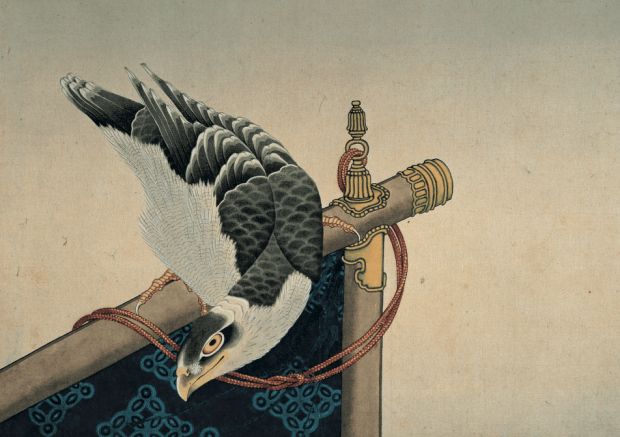
‘Nikuhitsu Gajyo(肉筆画帖), Taka(鷹)’, well drawn down to the finest lines.。
For 70 years, Katsushika Hokusai hungrily pursued his own unique style and did not let go of his paintbrush until the very end of his life. His extraordinary life as a painter came to a quiet end in 1849, when the footsteps of a new era were growing louder.

Self-portrait by Katsushika Hokusai of himself at the age of 80.
Was Hokusai an eccentric? Moving 93 times in 90 years
One episode that shows that Hokusai was an eccentric man is that he moved frequently. He moved a staggering, 93 times. Most of them were in the area around the present-day Sumida Ward, where he was born and raised, and he once moved three times in one day. The last house he lived in was the house he used to live in, which had been untenanted for a long time because Hokusai had left it in a state of disrepair.
 ‘Honjo Ezu (本所絵図)’, published between 1849 and 1862, National Diet Library/Hokusai’s area of activity in Edo was centred on the Honjo area shown above.
‘Honjo Ezu (本所絵図)’, published between 1849 and 1862, National Diet Library/Hokusai’s area of activity in Edo was centred on the Honjo area shown above.
Such was his lifestyle that Hokusai was listed as ‘undetermined’ in the address column of the biographical register of the time. The reason why he moved so much was because he was so busy painting that he did not have time to clean. For Hokusai, whose first priority was painting, his house was a place to paint rather than a place to live, and when his house became what we now call a rubbish dump, he moved to another house rather than cleaning it.
With more than 30,000 of Hokusai’s works extant, and with him completing 1-2 works a day, it was probably inevitable that the quality of his lifestyle would be neglected.
This article is translated from https://intojapanwaraku.com/rock/art-rock/1100/






